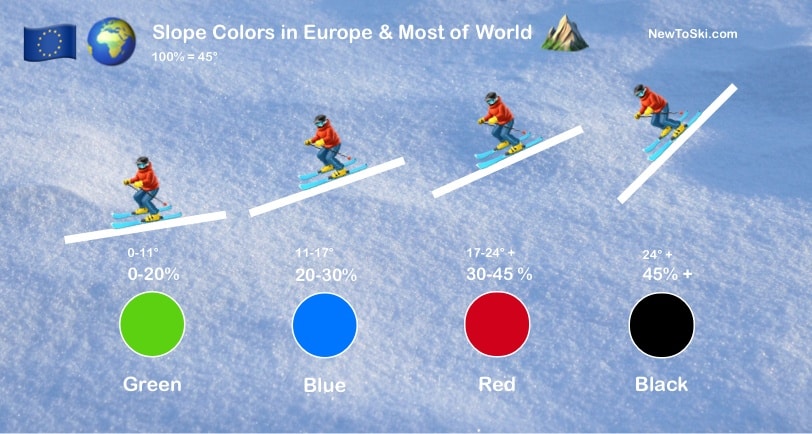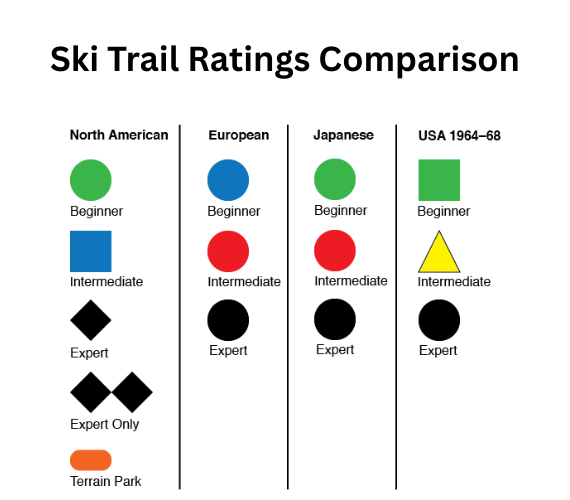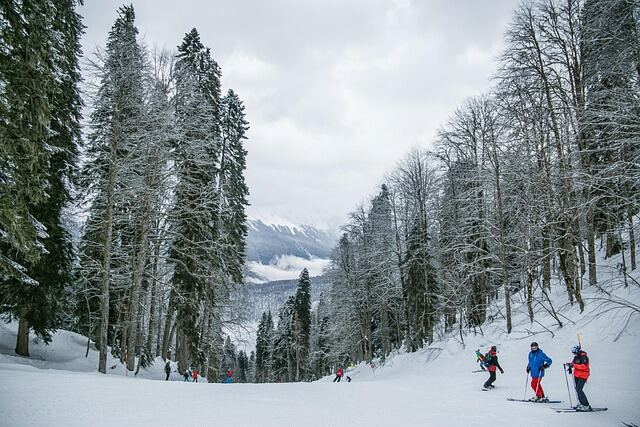Skiing is a physical sport with varying degrees of difficulty. As such, slopes and trails are graded based on the terrain using a color-coded and shape system.
A pink triangle, however, is not a difficulty rating for a ski slope. Instead, the pink triangle is recognized as a symbol for the LGBTQ+ community.
Let’s take a quick look at the colors and symbols designated as difficulty ratings for ski slopes, and where the pink triangle’s meaning originated.
Ski Slope Difficulty Ratings


To enjoy the sport fully, selecting a ski trail that matches your ski level is a must. Doing so keeps you and others safe during your run.
The ski slope difficulty designation signage in each country can vary. However, there is some common ground that can help you figure out the terrain’s difficulty level.
In general, the difficulty color-coded system goes as follows:
- Green is the easiest terrain.
- Blue is typically designated for beginner and/or intermediate slopes.
- Red is assigned for advanced runs.
- Black is reserved for experts only.
In some cases, orange is dedicated to rare or very challenging runs, such as the Swiss Wall.
With a 37° average slope and a 76% gradient, the Swiss Wall, known as the most challenging slope in the world, is assigned the rare orange difficulty level.

The Origin of the Pink Triangle
While colors and shapes help identify the difficulty level of a skiing terrain, a pink triangle is not recognized as part of a ski slope’s difficulty system.
A downward-pointing pink triangle was first used in Nazi Germany during the 1930s and 1940s.
It was used as an insignia of shame on the chest of male prisoners who were perceived as homosexuals, transgender women, and those deemed sexual deviants.
However, in the 1970s, the LGBTQ+ community adopted the symbol, awarding it new life as a symbol of protest against homophobia.
Many in the LGBTQ+ community also chose to don the symbol in remembrance of past victims of homophobic violence and discrimination.
Conclusion
Due to the varying degrees of difficulty of skiing, slopes and trails are graded based on the terrain using a color-coded and shape system.
A pink triangle, however, is not part of a ski slope’s difficulty system.
Instead, the pink triangle is recognized as a symbol for the LGBTQ+ community.
Quiz: Which of the following is not a difficulty rating for a ski slope?
- Green Circle
- Pink Triangle
- Black Diamond
- Blue Square
Answer: Pink Triangle.
